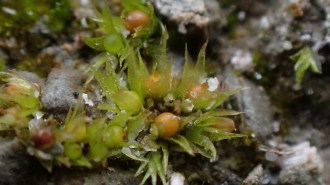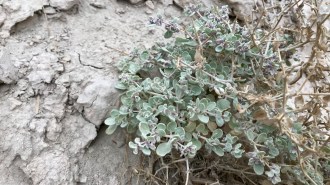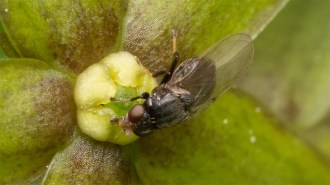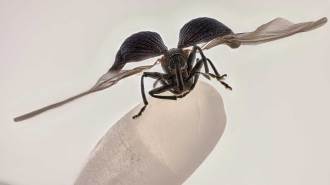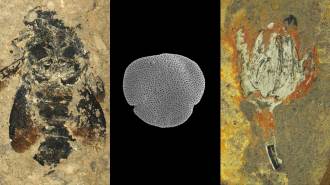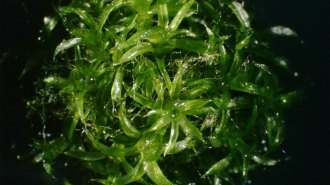From Mobile, Ala., at the Botany 2003 meeting
A lichen may have seemed complicated enough back in the good old days, when biologists described it as a partnership between a fungal and an algal species. Lichenologists are now debating even trickier arrangements, such as the stripes of Neuropogon.
This lichen genus shows up mostly in polar regions. The typical form grows light and dark bands. Biologists have theorized that the colors represent some fancy adaptation to changing light conditions, but Elfie Stocker-Wörgötter of the University of Salzburg in Austria proposes a quite different explanation. When she teased out bits from each band and grew them as individuals, they showed different forms and chemistry. The bands represent algae pairing with different fungal species, she contends, and DNA tests show they’re not even closely related fungi.
Lichenologists had wondered whether what a casual observer would point to as one lichen actually includes genetically different fungi. “This idea had never been rigorously tested,” says James Lawrey of George Mason University in Fairfax, Va., but molecular biology now wields the tools to do so. Before Stocker-Wörgötter’s report, other lichenologists had found some molecular data suggesting fungal differences, but Neuropogon may rank as the most extreme case of an individual lichen including multiple fungi. Stocker-Wörgötter’s idea fuels the debate that Lawrey characterizes as, “What–if anything–is an individual lichen?”
****************
If you have a comment on this article that you would like considered for publication in Science News, send it to editors@sciencenews.org. Please include your name and location.
